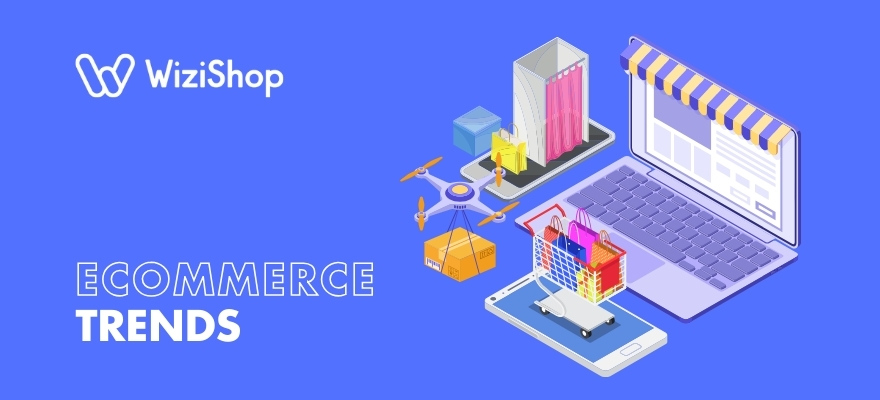Based on Statista data, with approximately $6 trillion generated worldwide in 2024 and growth of about 3.4% compared to the previous year, the ecommerce sector has never been in better shape.
Furthermore, although online sales represented only 14% of global retail trade in 2019, they now represent more than 17%.
A great year for digital commerce and a future full of promise for businesses everywhere!
It’s therefore time for us to take stock of the trends that will make up ecommerce in 2025, providing you with valuable insights to help prepare your business to evolve in your industry and boost your brand image as much as your conversion rate!
Table of contents
- 1. Artificial intelligence in all areas of online sales
- 2. Social selling: Still in the lead
- 3. Marketplaces: Find your place in the market
- 4. Ultra-customized and sustainable product delivery
- 5. Video: A new tool for ecommerce customer service
- 6. Second-hand and reconditioned goods are booming
- 7. The importance of consuming locally and/or nationally
- 8. Augmented reality and visual ecommerce to improve the customer experience
- 9. Live shopping is making a comeback
- 10. Voice commerce and voice search
- 11. The senior target: The new online shoppers
- 12. Targeting sub-niches to know what to sell on the internet
- 13. Using a CDP for better customer personalization
- 14. Omnichannel extends to a unified shopping experience
- 15. Affiliate marketing is becoming a profitable e-business strategy
- FAQ
1. Artificial intelligence in all areas of online sales
Artificial intelligence (AI) is being employed by retailers in many areas of online sales to improve user experience and increase conversions. Here are just a few examples of how these ecommerce innovations are being used:
- Product recommendations: Recommendation systems use AI algorithms to suggest products to a consumer based on their browsing history and previous purchases.
- Product recognition: Search engines use AI techniques to understand user queries and deliver relevant results.
- Chatbots: Chatbots use AI to answer consumer questions and help potential customers find the products they're looking for. Chatbot tools are also becoming vocal, and are tending to replace human action in the handling of customer responses in call centers.
- Data analysis: Brands are using AI tools to analyze data on site visits and purchases and obtain helpful insights to better understand consumer trends and preferences.
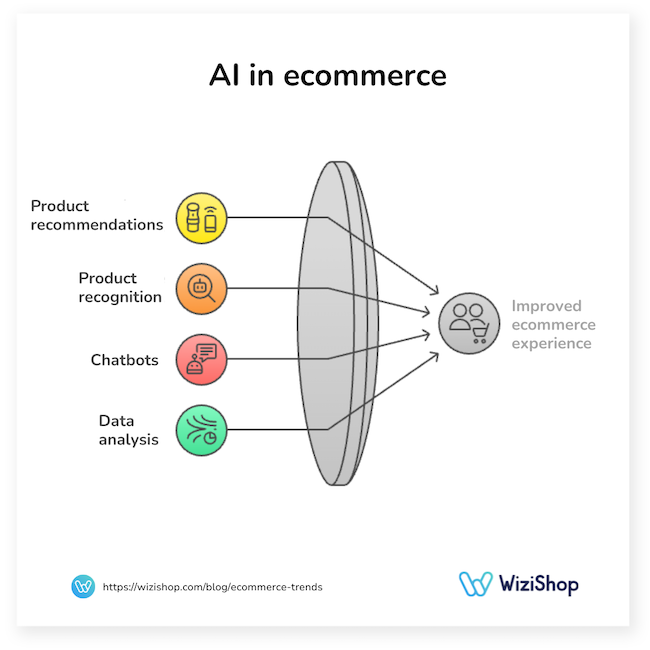
But what really heralds big changes in the world of online sales is the possibility for internet commerce retailers to use artificial intelligence on a daily basis, thus entering into the advantages of future ecommerce.
With the WiziShop solution, you can now generate all your SEO-optimized editorial content directly from your administration space. Product description, blog post, category, content ideas... Everything is automatically generated by the WiziShop AI included in your subscription. Even answers to your questions about ecommerce and your WiziShop online store are managed by artificial intelligence, thanks to the Maia chatbot accessible from your back office 24/7. The future of ecommerce is just a click away!
Try WiziShop free for 7 days
THE EASIEST NO-CODE ECOMMERCE SOLUTION✅ No credit card required
✅ Access to all features
✅ No commitment
2. Social selling: Still in the lead
Among the trends of the year 2025, one trend has already been established for several years and isn’t ready to be dethroned. What is it? Social selling or social commerce!
Once reserved for large accounts, social selling has been widely democratized in recent years and now offers a multitude of possibilities for marketing large businesses’ products as well as those of smaller ones.
Today, the social commerce trend is on the rise on a global level compared to previous years, and is aimed at all sectors and all types of audience.
Tools adapted and designed for this purpose, precise targeting... But, it’s especially the ability of consumers to buy directly from a post on social media platforms, particularly on cell phones, that has greatly contributed to the growth of this marketing concept, which is now essential for web commerce companies everywhere, regardless of industry or product being sold.
Several social networks now have this capability. Instagram Shopping, for example, offers a catalog for e-tailers and the ability to tag products in posts, thus generating a positive impact on online sales.
This allows you to attract potential customers in your target market, create conversation, and convert to help maximize your brand’s growth and how much you can make in ecommerce.
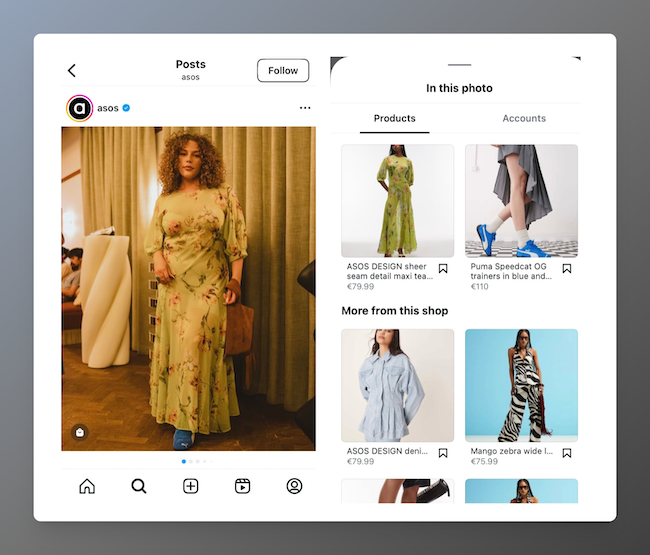
Source: ASOS on Instagram
Instagram isn’t the only social media network to offer this type of option for businesses. However, it’s, today, the most complete, compared to TikTok, Snapchat, YouTube, or Facebook.
3. Marketplaces: Find your place in the market
Ecommerce statistics are clear. Marketplaces have established themselves as the sales levers most favored by consumers.
According to the Mirakl study, 70% of consumers consider the marketplace to be the most convenient channel for making their purchases.
Source: Mirakl
This strategy has been widely adopted by major retailers, such as Walmart, which has completely redesigned its digital commerce site to offer customers products from its partners, in addition to its own catalog.
Marketplaces are now an integral part of the visibility and reputation strategy of online stores.
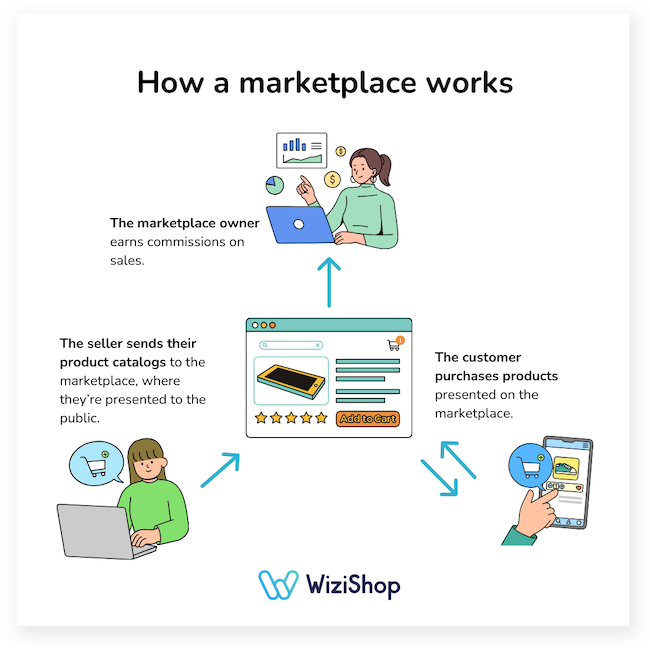
A way to make yourself known, but above all, to offer a viable continuity to physical commerce.
Marketplaces are a great marketing lever for your online shop.
4. Ultra-customized and sustainable product delivery
Delivery is an essential part of online sales and is becoming increasingly important in consumers’ purchasing decisions, as it can have a major impact on shoppers’ experiences purchasing from a brand.
💡 Whether it’s fast delivery, click and collect, or pick-up at a relay point, consumers like to customize their delivery options based on their habits.
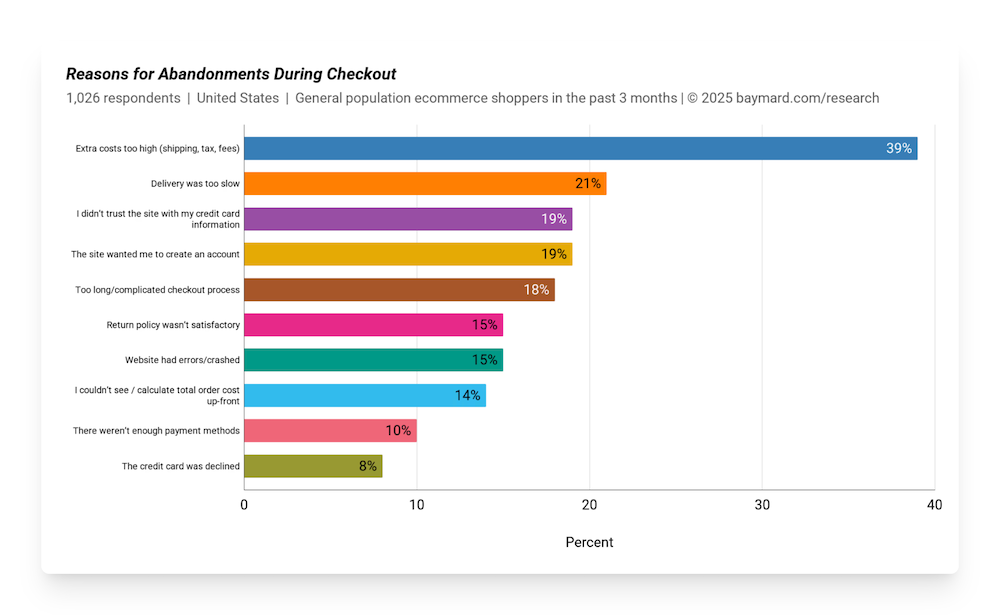
Source: Baymard Institute
As you manage your ecommerce site for your business, consider what methods your business’s ideal customers will appreciate to help improve the user experience and encourage them to make a purchase.
Note that in recent years, the trend is towards sustainability: e-shoppers prefer certain types of more sustainable deliveries when purchasing from retailers on the internet, such as order consolidation, delivery to a relay point, or even the circular economy and buying locally or within their national borders.
One of the current global challenges for internet commerce involves managing the last mile, which represents a major strategic challenge for businesses, particularly in terms of logistics, delivery speed, and carbon footprint reduction to improve sustainability.
This final, ultimate stage in the supply chain requires innovative solutions to balance efficiency, cost control, and customer satisfaction.
5. Video: A new tool for ecommerce customer service
Video has become a major part of internet commerce practices: whether it’s a marketing tool or a tool of choice in customer care, text and/or photos have given way to videos, which are more personalized, closer, and more involved with customers.
Whether it’s to present a product on social media or to create a live event around your catalog or your brand’s universe, commercial practices have never been so precise and so focused on this type of content.
@brooksrunning Inspired by our silhouettes in the 70s and 80s - this throwback Ghost Max SE gives you max cushion + protection - shop at the linkinbio \ud83d\udd17 #lifestyle #shoes #sneakers \u266c Assumptions - Sam Gellaitry
Source: Brooks Running
This trend is experiencing more growth compared to previous years and is generating a snowball effect on online engagement and sales for brands everywhere.
💡 With the Fliz solution, you can generate your product video in just a few clicks, thanks to AI, from your product page URL. This saves time and increases efficiency, allowing you to quickly generate tutorial content and post it on all your social networks.
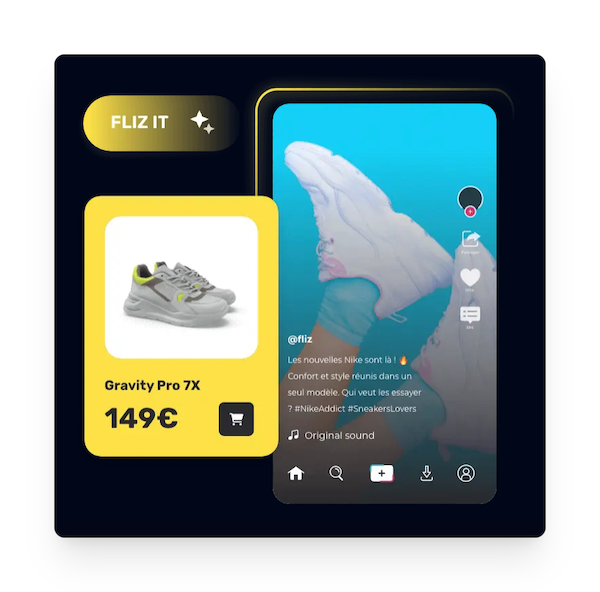
The real revolution of the year has been the extension of this practice to customer service.
In order to respond to all customer concerns, many retail businesses have started filming and recording after-sales service for greater efficiency.
And how about you? Have you started shooting video content to guide shoppers to your website and convince them to become customers?
If not, and if you find that your online store is not selling like you’d hoped, search for ways you might be able to start incorporating videos into your marketing strategy for social media and beyond to help bring your ecommerce business more growth.
6. Second-hand and reconditioned goods are booming
This awareness and the need to give meaning to one’s purchases has led to the emergence of a new form of commerce: recommerce.
Recommerce comes from “reverse commerce” and quite simply means “second-hand commerce.”
After decades of over-consumption and “fast commerce,” Generation Z is advocating for greater awareness and more ethical modes of consumption. The global recommerce trend is on the rise compared to previous years, and is having an effect on consumers, who are now favoring more responsible and sustainable purchases.
Wise, useful, and infinitely (or almost infinitely) reusable purchases, the second-hand sector is on a roll, particularly on digital and mobile channels. This phenomenon is also having an impact on retail, which is adapting by offering dedicated second-hand spaces in stores and online.
In 2023, 60% of respondents in a study of consumers in the US stated that they’d made at least one second-hand purchase within the last year.
Source: Statista
Online retail giants are also investing in the sector: brands are starting to sell products from their previous collections “second hand” directly in their stores.
These are sustainable and promising levers for your brand!
As far as what products are most popular in the second-hand goods category, sartorial items take the lead, according to a 2024 survey by Statista, which found that 30% of U.S. respondents had purchased second-hand clothing in the previous year.
Source: Statista
7. The importance of consuming locally and/or nationally
In this desire to consume better, purchasing local and “Made-in-[buyer’s own country] products are sustainable, timeless trends that are increasingly part of the consumer purchasing habits of people around the world.

Tata Harper skincare products made in Vermont
Many people say they prefer products from the circular economy, first of all for environmental reasons, but also for the quality of their purchases and to support local businesses that have suffered from the various successive crises.
8. Augmented reality and visual ecommerce to improve the customer experience
Following the coronavirus crisis and thanks to technological advances, brands have invested in technology involving augmented and virtual reality to allow consumers to try, consume, and purchase despite the impossibility of going to the store.
💡 Although still reserved for large brands for the most part, AR technology has enabled consumers to immerse themselves and sellers to engage with their customers’ environments.
The gap between digital and physical is becoming increasingly blurred, and these presentation models are now popular and appreciated by shoppers, especially in mobile commerce and on social media platforms.

Source: FARFETCH
9. Live shopping is making a comeback
Does the ability to buy a product directly during its online presentation sound familiar? Live shopping is born again from its ashes.
In 2019, it was NBC who tried it with an application allowing viewers to “shop” their products seen on TV directly on their smartphone.
In 2020, live shopping went viral in China thanks to Taobao Live, the dedicated mobile app from AliExpress.
Since then, the wave of live streaming shopping is spreading to the four corners of the world. Instagram is developing it on its platform, and TikTok is also getting involved.
Live shopping has a bright future ahead of it for a whole new ecommerce customer experience!
Live sales are predicted to account for 20% of ecommerce sales by 2026. What’s more, the conversion rate for this sales channel is 30%.
Source: McKinsey Digital
It’s up to you to implement this type of practice in your sales business with a suitable payment method and ride this trend that’s popular with online buyers.
10. Voice commerce and voice search
Voice assistants are an integral part of our daily lives.
In 2022, approximately 142 million Americans were using voice assistants, which is almost half of the U.S. population. This number is estimated to reach 157.1 million users by 2026.
Source: Statista
Whether they’re in the form of connected speakers or integrated into smartphones, the place of these voice assistants is becoming increasingly important on a global level with a real challenge for brands to be recognized as the “best choice” in order to have the chance to be proposed to consumers.
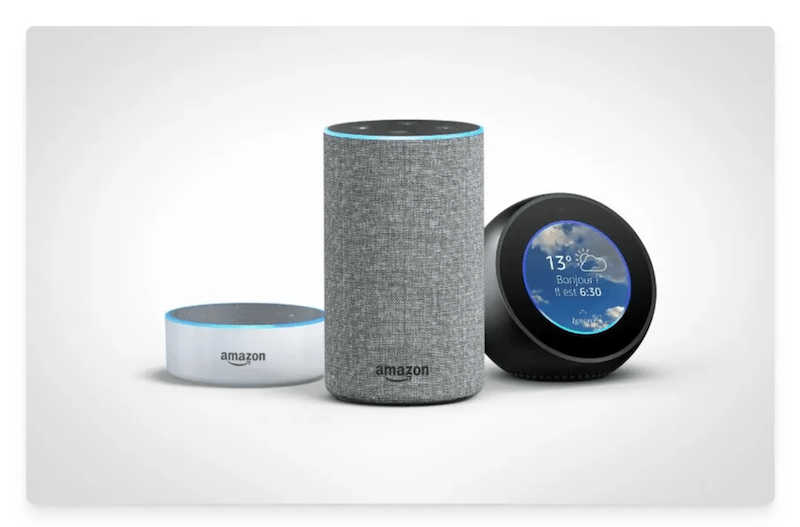
The challenge of 2025 will be for businesses to give confidence to the consumer who is still reluctant to place orders and pay on voice platforms, with the fear of not being able to secure their data.
65% of people aged 25 to 49 communicate at least once a day with their voice-controlled devices.
Source: PWC
11. The senior target: The new online shoppers
58% of senior citizens report having at least one social network, 66% are connected to the internet, and 76% of seniors have a computer at home.
Source: WOO
More and more seniors are becoming ecommerce enthusiasts, as they recognize the advantages of this mode of purchasing, such as convenience, wide product choice, and competitive prices.
Today’s connected seniors are increasingly using the web to buy products from their favorite brands online.
Seniors are also more comfortable with digital technologies and increasingly understand the benefits of online ordering.
It’s important for retailers to take seniors’ needs and preferences into account to offer them a pleasant online shopping experience.
For example, it’s useful for digital commerce companies to make it easy to search for and find products on their website, provide multiple payment methods and have simple ways of contacting customer service (chat, telephone) for customers who prefer this option.

On the Chewy website, people have the option to contact customer service via phone, email, or live chat.
Seniors are dynamic consumers, and it’s essential to consider them in your brand’s sales strategies.
12. Targeting sub-niches to know what to sell on the internet
If you work in ecommerce, you’re already aware of the importance of a niche in order to stand out on the web.
A niche in ecommerce allows you to target a specific product sector and audience, who will be directly interested in the type of item you're offering. Finding a niche is a key step for all ecommerce entrepreneurs.
Today, to stand out from the crowd and attract a public committed to your products, thinking about your strategy by choosing sub-niches can be very profitable.
💡 A sub-niche is characterized by products that appeal to a very narrow target of potential customers but have the potential to win them over in the long term or generate a large number of sales.
This could, for example, be a highly customizable product, such as eco-responsible sweatshirts with the option of adding your own design.
It can also involve seasonal products, offered only in a catalog that focuses on specific categories, such as end-of-year celebrations or weddings.
When you use WiziShop to create your online store, you will have access to a handy AI tool directly in your dashboard that can help you find the ideal niche for your business in seconds!
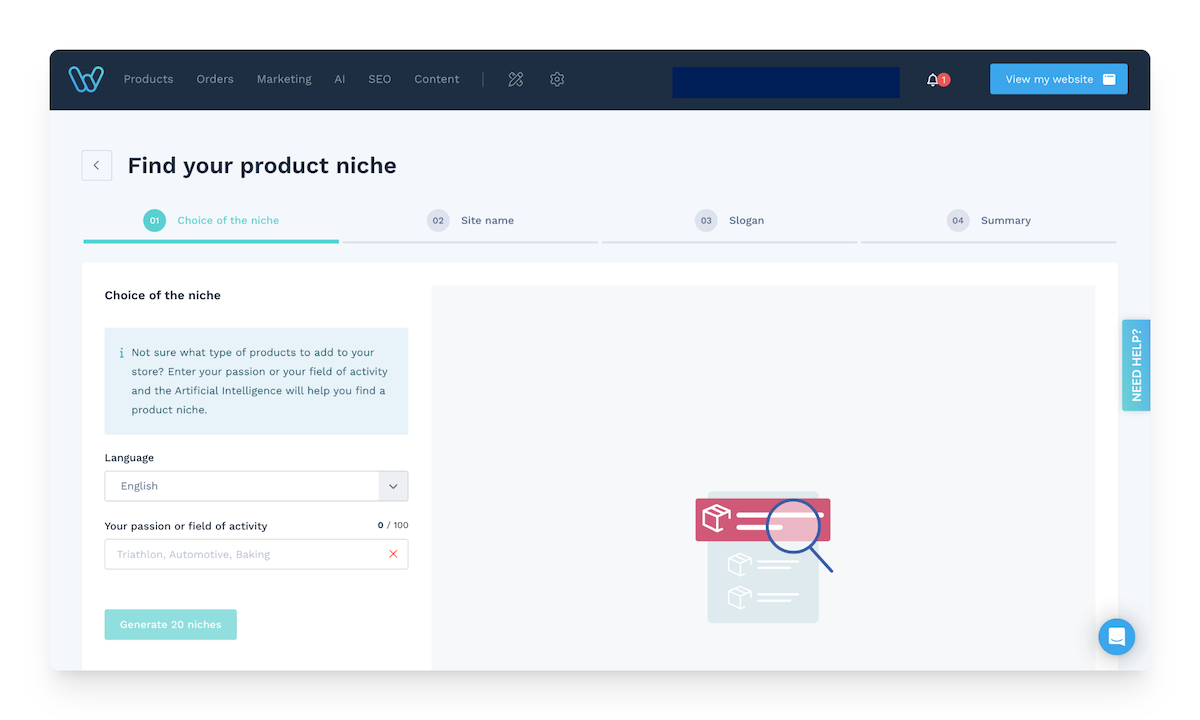
13. Using a CDP for better customer personalization
The use of a customer data platform (CDP) is a revolutionary step in improving customer personalization, which will allow retailers to go even further than with a customer relationship management (CRM) system.
This tool collects customer data from a variety of sources, for a complete, unified view of each customer. With this rich, detailed information, brands can create tailored experiences that meet the needs and preferences of each customer.
A CDP integrates data from various touchpoints into a detailed analysis of customer behaviors, preferences and interests.
With instant access to data, companies can react quickly to customer actions, enabling real-time personalization. This software helps to segment customers more precisely, enabling businesses to target their messages and offers more effectively.
Unified data in a CDP ensures that personalization is consistent across all channels, whether website, mobile app, or even email communications.
💡 Marketing campaigns, order placement, after-sales service, development, shopping experience, supply chain, payment solutions, pricing policy... All aspects of ecommerce stores will be impacted by this ultra-precise data.
Twilio Segment, Adobe Experience Platform: these are examples of CDP software to help businesses grow and increase their revenue.
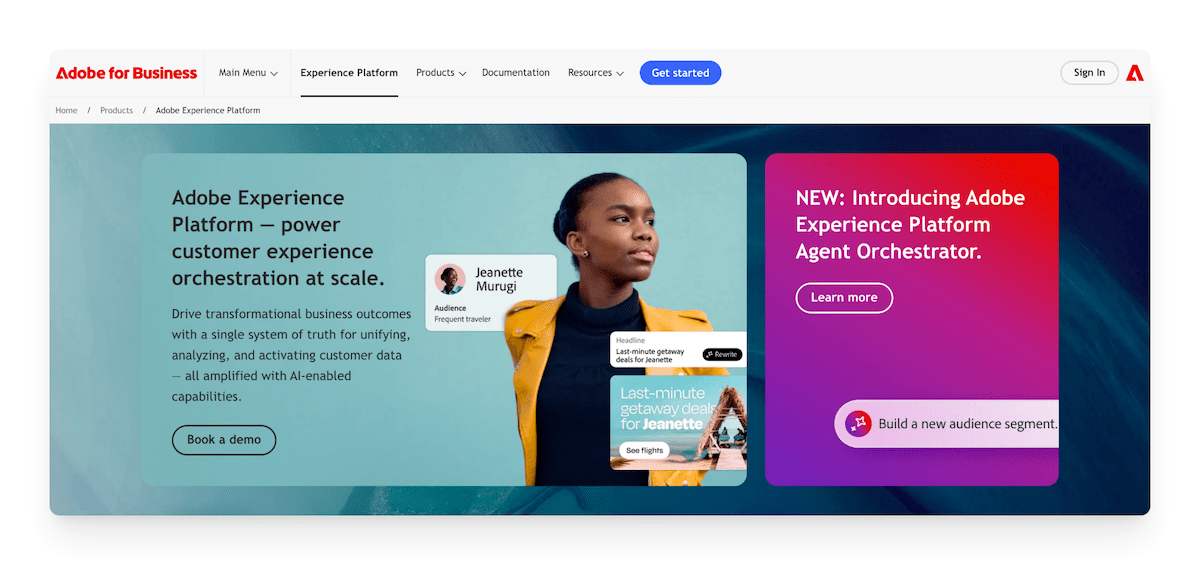
14. Omnichannel extends to a unified shopping experience
Haven’t you noticed that the app for the store you’re in appears first in your app suggestions on your smartphone just as you’re shopping there?
This is an example of omnichannel commerce, another leading trend in ecommerce today.
Omnichannel redefines the shopping experience for a unified customer journey, in a process where online, mobile, and in-store purchases are seamlessly connected.
You can start exploring an item on your smartphone, test it in store, and finally buy it online with all your preferences saved.
This omnichannel approach creates an ideal shopping experience, where every interaction is synchronized across all channels, from ecommerce stores and mobile apps to physical stores and even email or SMS campaigns, thanks to the strength of the customer account and geolocation.
This means less hassle and more enjoyment in the shopping experience, so you can enjoy a tailor-made experience to suit every need!
According to the 2024 IFOP study for Comarch, omnichannel is very present in consumers’ shopping habits, with 48% of respondents having an omnichannel purchasing journey.
Source: Comarch
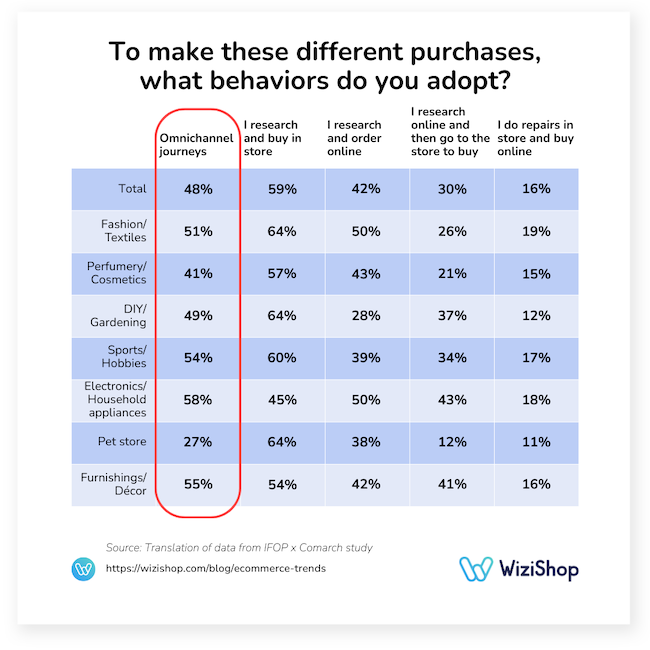
Translation of data from a 2024 IFOP study for Comarch
15. Affiliate marketing is becoming a profitable e-business strategy
Affiliate marketing is fast becoming a profitable model for launching an online business. As an effective way of promoting products and services, individuals and professionals can earn money by recommending brands’ products or services to their target market.
The benefits of affiliate marketing include clear rewards, potentially high commissions, an easy sign-up process, and real-time sales tracking.
Evolup is the ideal platform for online affiliates. With exceptional performance in terms of simplicity, efficiency, and fluidity, Evolup offers a service 100% dedicated to affiliate marketing.
With the Evolup platform, you can easily create your own affiliate site in just a few clicks, using an SEO base optimized for better visibility in search results. The integration of artificial intelligence makes site creation fun: leave it to AI to write your product descriptions, blog posts, and other kinds of text content!
Our team of Business Coaches is with you every step of the way to help you maximize your income. You can start earning as little as $10 a month, whether it’s a personal or professional project. Try our solution free for 7 days and discover all the opportunities Evolup can offer you to make a living from your passions.
FAQ: Ecommerce trends between 2019 and 2024
What were the ecommerce trends and innovations in recent years?
In recent years, ecommerce has been marked by COVID-19. Some trends have emerged and are now sustainable, such as the following:
- Marketplaces have grown.
- Dropshipping exploded before slowing down.
- Augmented reality has invaded internet commerce sales sites and social networks.
- Payment in installments has become a must in ecommerce.
- Recommerce has attracted millions of customers.
- Click and collect has kept the link between ecommerce and retail during the crisis.
The fabulous resilience of the ecommerce sector has revitalized trade, whether it’s physical or electronic.
From new marketing levers, more personalized, more efficient to the possibility of adapting the market to the constraints imposed by the health crisis, everything seems possible to boost the impact of ecommerce on the consumer and provide improved shopping experiences.
And your ecommerce business just needs to rely on the trends.
What sells best on the internet?
It’s hard to predict what trends will hit the market in the coming months. However, some major product groups are not experiencing a crisis and are still experiencing significant growth in the market:
- Eco-responsible products: Consumers are increasingly aware of the environmental impact of the products they buy, so it’s likely that ecological and eco-responsible products will continue to be in high demand. With this focus on sustainability, the second-hand sector is booming.
- Health and wellness products: It’s likely that health and wellness products will continue to be popular, due to the growing awareness of these themes and the desire to find ways to stay healthy.
- Connected products: Connected products such as smartphones, accessories, fitness equipment, and electronics will likely continue to be popular, as consumers look for ways to improve their quality of life through technology, all from refurbished product sites!
What should you sell on the internet to stand out?
E-merchants: how about a little help in your search for trendy products to sell in the coming months? Here are a few ultra-original ideas!
- Digital wellness products: applications or devices focused on wellness and mental health, such as guided meditation, mindfulness, or sleep tracking.
- Relaxation and meditation products for kids: items designed for children to encourage relaxation and mindfulness, with children's yoga mats, meditation cushions, or relaxing audio books.
- Wearable technology for pets: technological gadgets for pets, such as GPS-connected collars that monitor the animal’s health or physical activity.
- Gardening kits for apartments: complete kits for growing herbs, vegetables or edible flowers in small spaces, or for composting in apartments.
- Travel accessories for photographers: specialized equipment for traveling photographers, such as waterproof bags, lightweight tripods, and secure storage solutions for photographic equipment.
- High-end survival equipment: luxury survival kits for extreme adventure enthusiasts, with sophisticated navigation tools, high-quality portable shelters, and gourmet food rations.
- Photography kits for old techniques:
- Connected products: Connected products such as smartphones, accessories, fitness equipment, and electronics will likely continue to be popular, as consumers look for ways to improve their quality of life through technology, all from refurbished product sites!
What should you sell on the internet to stand out?
E-merchants: how about a little help in your search for trendy products to sell in the coming months? Here are a few ultra-original ideas!
- Digital wellness products: applications or devices focused on wellness and mental health, such as guided meditation, mindfulness, or sleep tracking.
- Relaxation and meditation products for kids: items designed for children to encourage relaxation and mindfulness, with children's yoga mats, meditation cushions, or relaxing audio books.
- Wearable technology for pets: technological gadgets for pets, such as GPS-connected collars that monitor the animal’s health or physical activity.
- Gardening kits for apartments: complete kits for growing herbs, vegetables or edible flowers in small spaces, or for composting in apartments.
- Travel accessories for photographers: specialized equipment for traveling photographers, such as waterproof bags, lightweight tripods, and secure storage solutions for photographic equipment.
- High-end survival equipment: luxury survival kits for extreme adventure enthusiasts, with sophisticated navigation tools, high-quality portable shelters, and gourmet food rations.
- Photography kits for old techniques: kits for practicing old and rare photographic techniques, such as wet collodion or cyanotype.
- Traditional and rare musical instruments: traditional musical instruments from specific cultures, accompanied by tutorials, accessories, and musical history guides.
- Professional-quality podcasting equipment: high-quality audio equipment for podcasters, with specialized microphones, audio interfaces, and soundproofing solutions.
- Do-it-yourself kits for miniatures and dioramas: kits for creating detailed miniatures and dioramas, targeted at model-making enthusiasts.
Thinking of starting a new online retail business? As you build your ecommerce website from scratch, consider the trends and insights described in this article to help guide you.
Make sure that your chosen platform will help you to accommodate these top global trends and create high-quality content while providing excellent experiences for customers visiting your online store, helping you to boost your web commerce revenue!
Try WiziShop free for 7 days
THE EASIEST NO-CODE ECOMMERCE SOLUTION✅ No credit card required
✅ Access to all features
✅ No commitment


